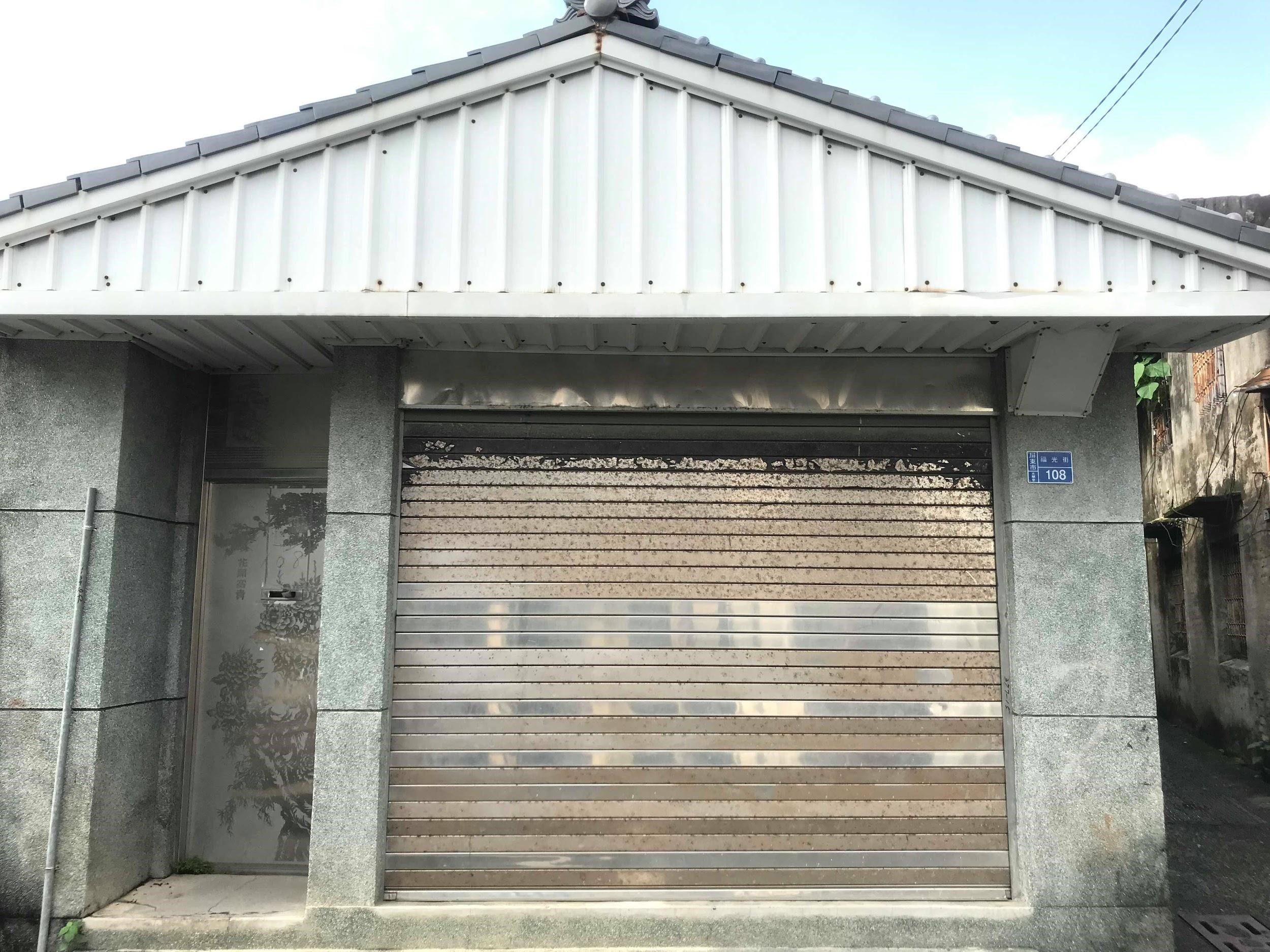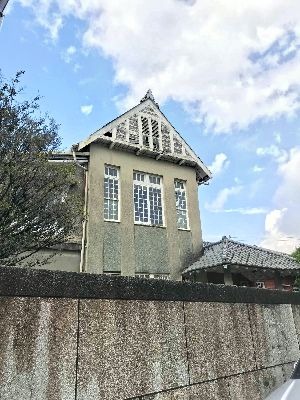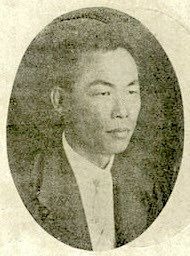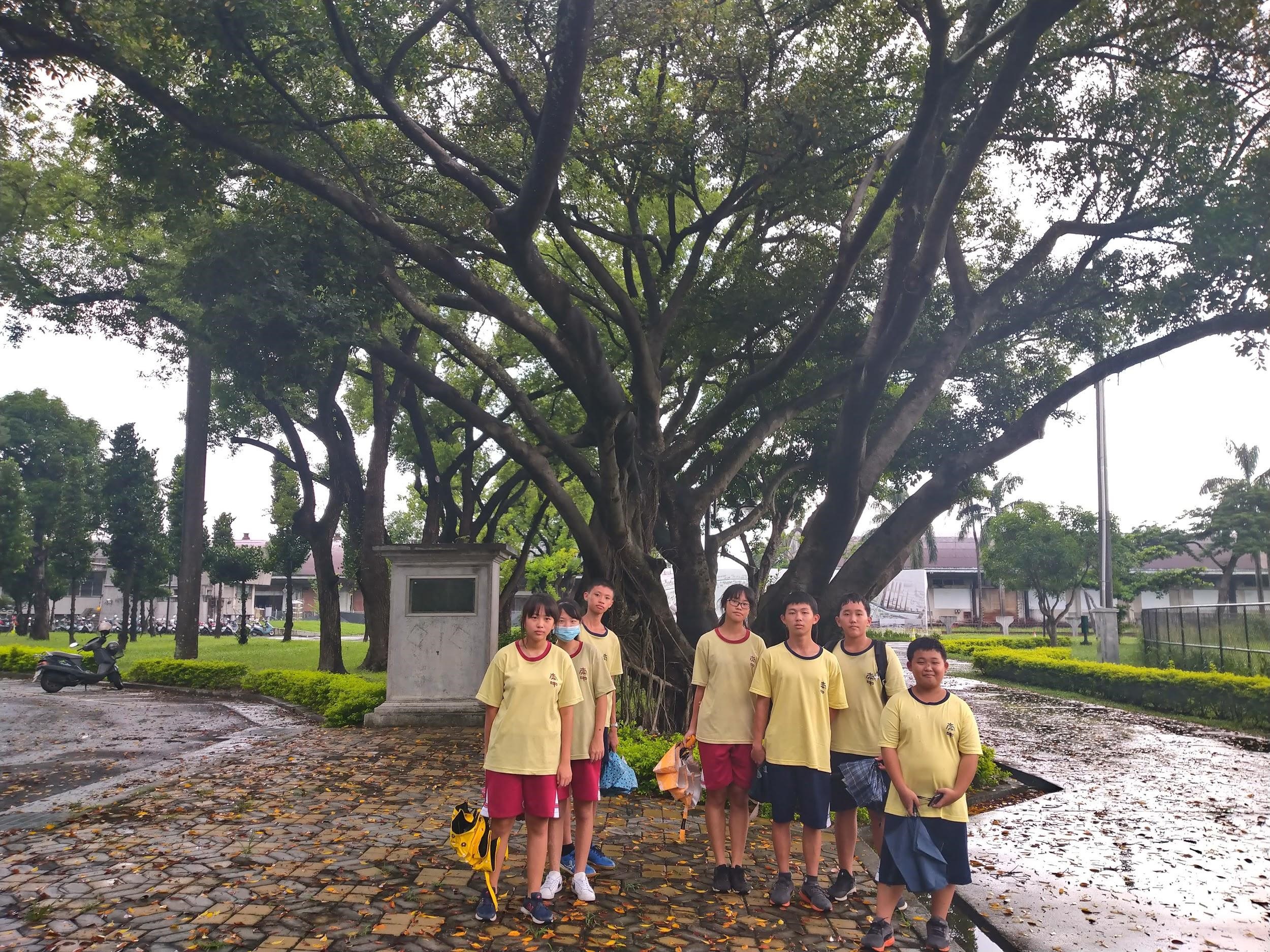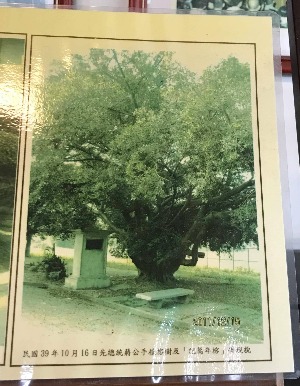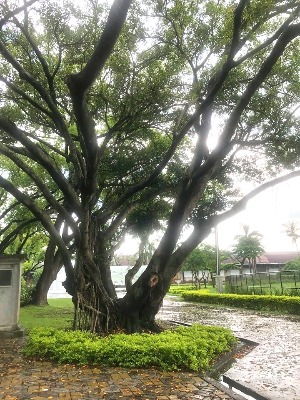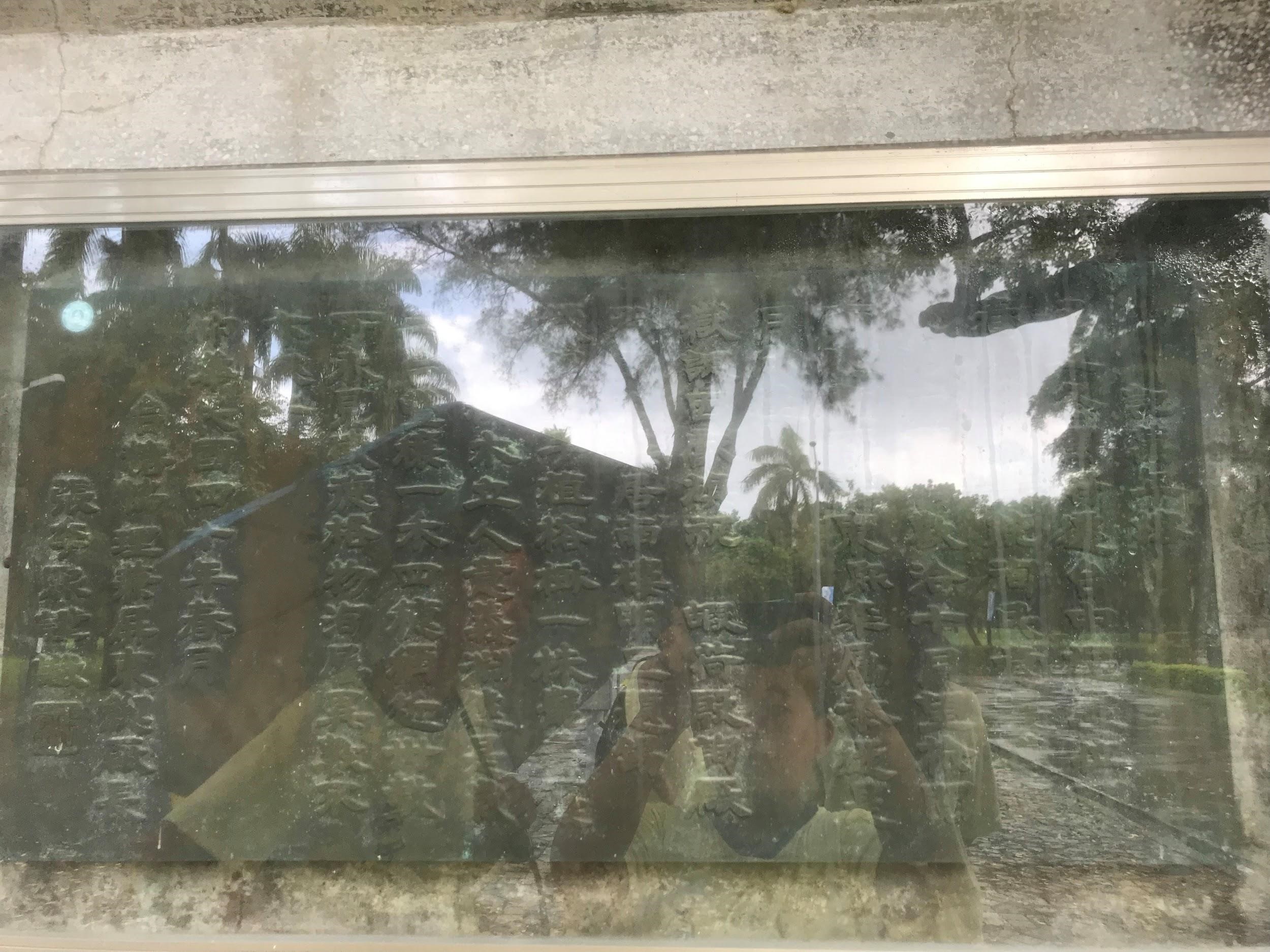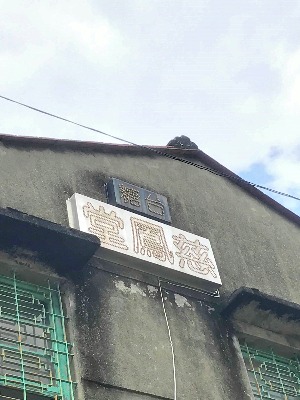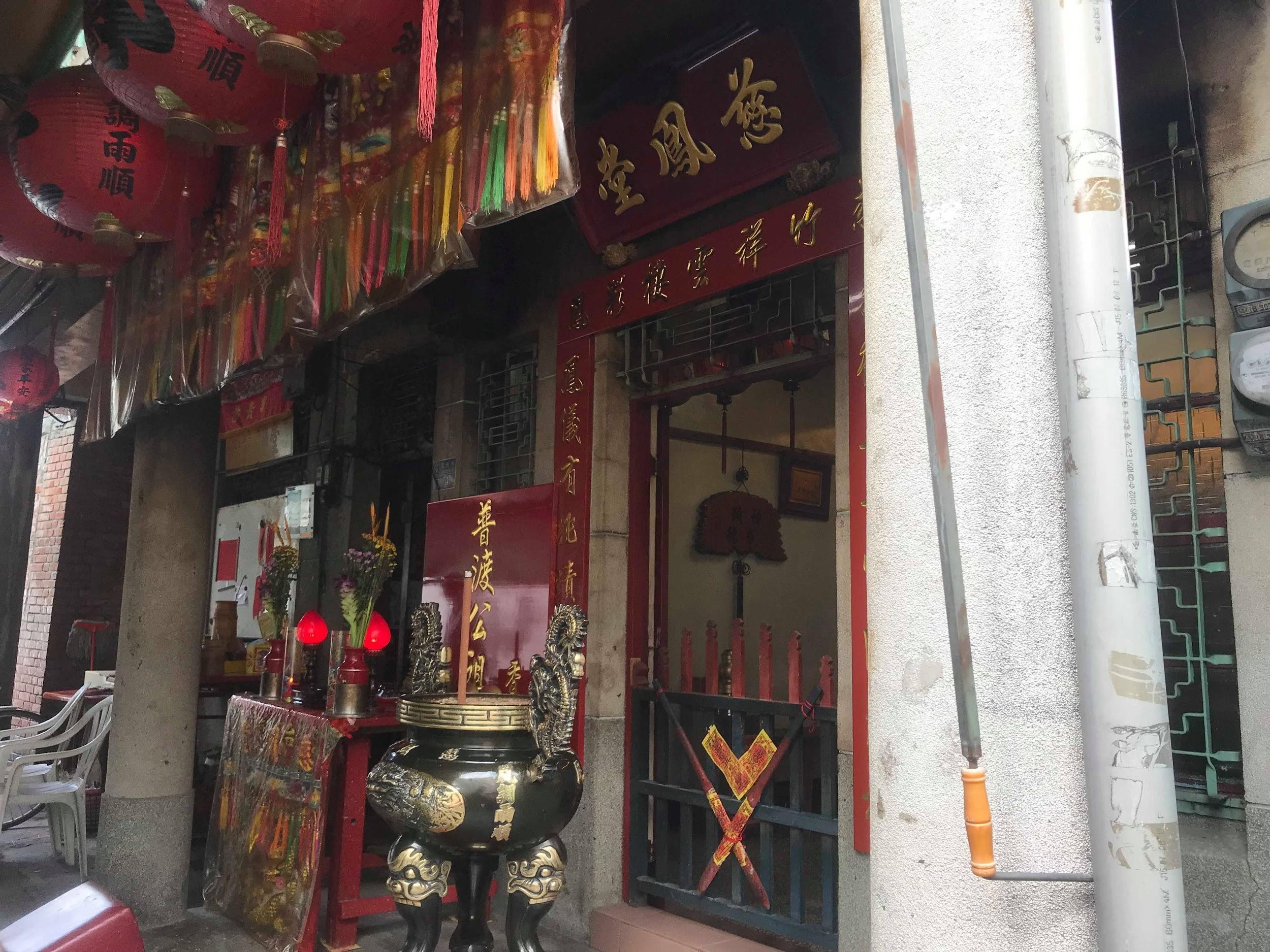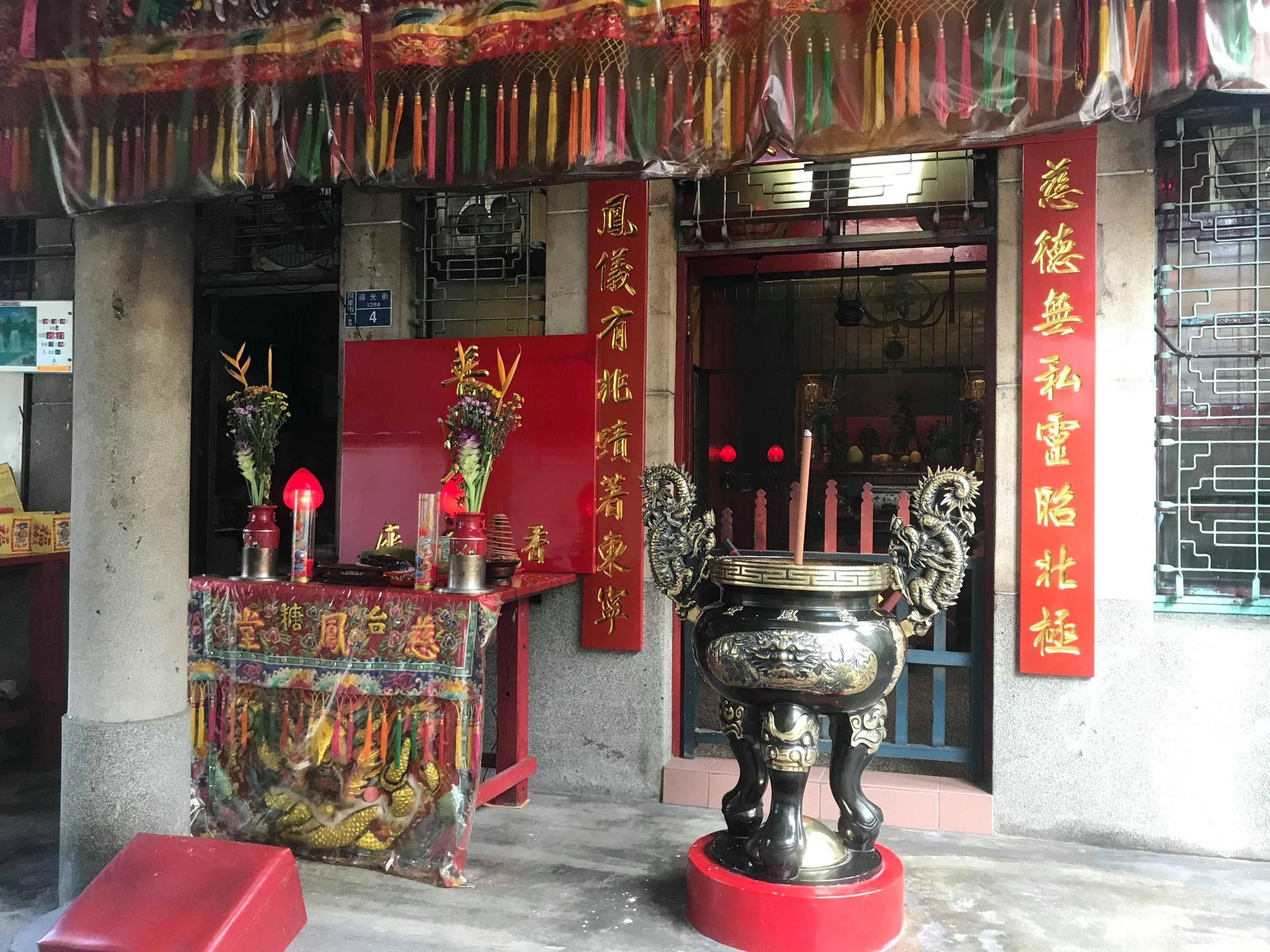Inscription chronicle
In the winter of 1949, the nationalist government moved to Taiwan. In the spring of thirty-nine, President Chiang was determined to return to the office of President, following the popular will of the people, and to govern by virtue. On the 25th day of October in the Chinese calendar (the full moon day in the ninth month of the lunar calendar), President Chiang made a tour of the whole province and came to pingtung in the south. The end of the month coincides with the President's birthday (October 31), so we took the opportunity to present the flag of congratulations. The President was deeply concerned about the business of the sugar mill and stayed at the south tower of the guesthouse that evening. The next day (39.10.26) in the morning, I wrote a warning and exhortation instruction, and planted a banyan tree with my own hands to commemorate the trip. All the employees of our factory feel honored to be loved and cared for by the President. We know that ten years of trees, a hundred years of the truth of cultivating people, we hope that through tree planting, pay attention to talent training, this is a very meaningful activity. When Taiwan had a bumper harvest, a single plant of rice had four ears, a record not seen in 30 years. The high moral character of the princeps and his efforts to find out the truth are very special. Isn't it a wonderful thing?
written respectfully by Zhang Ji-Xi , Taiwan Sugar Factory Manager ,
The inscription was written in traditional Chinese script by Zhang Ji-Xi, associate manager of Taiwan sugar. The inscription probably describes:
In the winter of 1949, the nationalist government moved to Taiwan. In the spring of thirty-nine, President Chiang was determined to return to the office of President, following the popular will of the people, and to govern by virtue. On the 25th day of October in the Chinese calendar (the full moon day in the ninth month of the lunar calendar), President Chiang made a tour of the whole province and came to pingtung in the south. The end of the month coincides with the President's birthday (October 31), so we took the opportunity to present the flag of congratulations. The President was deeply concerned about the business of the sugar mill and stayed at the south tower of the guesthouse that evening. The next day (39.10.26) in the morning, I wrote a warning and exhortation instruction, and planted a banyan tree with my own hands to commemorate the trip. All the employees of our factory feel honored to be loved and cared for by the President.
We know that it takes ten years to grow a tree , and a hundred years to cultivate people.We hope that we can pay more attention to people`s cultivation through planting trees , which is a very meaningful activity.
Preservation value
Forty years of the republic of China to pingtung factory visit Chiang kai-shek personally planting the banyan tree, known as "Longevity Banyan Tree" about seventy years ago, the tree has grown very lush, staff also carries on the part of the clip, but the county to find old banyan tree and stone tablets are not especially happy, because of Chiang kai-shek, because the past behavior of tested and controversial, not only the bronze Statue was smashed, and other items are destroyed, so the government has also urged people to stop damage the relics , and let the old tree continue to grow up,and leave the rest for the history to judge.

